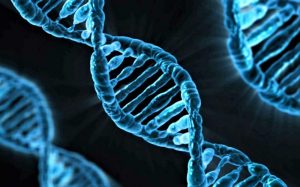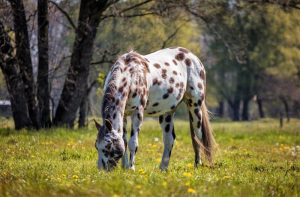Genotype
The word genotype refers to the genetic composition of an organism; in other words, it describes the complete set of genes that form an organism. In a more restricted sense, the term can be used to refer to alleles, or variant forms of a gene, that are carried by an organism. Humans are diploid organisms, meaning that they have two alleles in each genetic or locus position, with one allele inherited from each parent. Each pair of alleles represents the genotype of a specific gene. The outer appearance, or phenotype, is the result of the interactions of proteins created by DNA.
What is a genotype?
The genotype of an organism is the chemical composition of its DNA, which forms the phenotype, or the observable features of an organism. A genotype consists of all the nucleic acids present in a DNA molecule that encodes a particular characteristic.
History
The word genotype comes from the root geno, which means lineage or birth and in other cases from the Latin genus, and from the word generis which have a very similar meaning. In addition, it is composed of the word typos that means mark, print or type, related to the verb “typtein” that means to hit. It was proposed and coined by Wilhelm Johannsen, who was a chemist from Holland, who established the difference between the phenotype and the genotype. These terms were proposed and are important to distinguish the source of knowledge of an observer observing DNA and to know the phenotype by observing the external appearance of an organism.
Characteristics of the genotype
Among the main characteristics we can mention the following characteristics:
- They are a set of genes that characterize species, whether plant or animal.
- They have a DNA format and humans receive it through inheritance from their parents.
- The genes that are in charge of transmitting the characters of heredity are always in the nucleus of the cell.
- It manifests on the external part and includes all the physical characteristics that individuals possess.
- It can be distinguished when the DNA is observed.
- The phenotype is responsible for manifesting hereditary diseases.
Difference between genotype and phenotype
The difference that exists with the phenotype is that the genotype refers to the set of genes that an individual carries within his body, and all this information is located in the DNA, which is responsible for determining the different characteristics that can be observed in the phenotype, including those that determine their susceptibility to a particular disease. The genotype is the variation between the XX and XY chromosomes, which determines an individual’s sex. Environmental factors may influence the genotype in some way. The genotype is unique to each person and there is only one type of genotype in the human body.
The phenotype occurs when the genes that make up the genotype are expressed in the individual through characteristics that can be observed at first sight. They depend on the genes that are inherited and are also influenced by environmental aspects. The phenotype indicates or shows, for example, the symptoms of a certain disease.
Determination
The method used to investigate the genotype is known as genotyping or genetic characterization. This is a specific process for a biological organism through a procedure performed in the laboratory. It is a method used to discover an individual’s genetic information. This test can be applied to any type of organism, including microorganisms, viruses, and bacteria.
When this test is applied to viruses, it is done with the objective of finding the spread of pathogens by identifying possible sources of infection. Human genotyping is used to determine paternity tests and to determine if two or more people are related. Among the most common methods for genotyping are PCR, DNA sequencing, ASO probes, and hybridization in DNA micro-matrices or spheres.
Types
There are 6 types of genotype, which are:
- Hunter: are individuals who have stylized muscle and shape, their digestive system is veiled, and they are allergic.
- Collector: they tend to gain weight and accumulate calories in the form of fat.
- Master: they are strong and stable; they have an excellent metabolism.
- Explorer: they have longevity but suffer from environmental and chemical
- Warrior: they have a hard time losing weight, they recover well from illnesses.
- Nomadic: they are very adaptable, controls well the caloric intake and ages with health.
Genotype examples
Some examples of genotype types are the following:
- Predisposition or tendency to contract and suffer from diseases and disorders.
- Predisposition or tendency to gain and lose muscle mass and tone.
- Predisposition or intolerance to the consumption of certain foods.
- Blood types.
- Longevity and old age.
How to cite this article?
Briceño V., Gabriela. (2019). Genotype. Recovered on 3 January, 2025, de Euston96: https://www.euston96.com/en/genotype/










